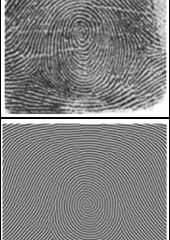This area deals with the fundamental laws and building blocks of nature and how they interact, the properties and the behavior of matter, and research into space and time and their structures.
innovations-report provides in-depth reports and articles on subjects such as astrophysics, laser technologies, nuclear, quantum, particle and solid-state physics, nanotechnologies, planetary research and findings (Mars, Venus) and developments related to the Hubble Telescope.

The planet Mars possesses two small moons named Phobos (Fear) and Deimos (Terror). Although their existence has been known since their discovery in 1877 and a number of long-range observations have been made by Earth-based telescopes and spacecraft that have visited Mars, the satellites remain only partially studied, particularly Deimos.
Consequently, a number of outstanding scientific questions remain concerning their origins, evolution, physical nature and composition. A recent study fund

Patterns in nature can be seen every day, yet in many cases, little is understood about how and why they form. Now University of Arizona mathematicians have found a way to predict natural patterns, including fingerprints and the spirals seen in cacti.
UA graduate student Michael Kuecken developed a mathematical model that can reproduce fingerprint patterns, while UA graduate student Patrick Shipman created a mathematical model to explain the arrangement of repeated units in various plants.

Black hole fits inside Earth’s orbit
Thirty years after astronomers discovered the mysterious object at the exact center of our Milky Way Galaxy, an international team of scientists has finally succeeded in directly measuring the size of that object, which surrounds a black hole nearly four million times more massive than the Sun. This is the closest telescopic approach to a black hole so far and puts a major frontier of astrophysics within reach of future observations. The scien

In this week’s issue of Science, a Dartmouth researcher comments about a new experiment that brings us closer to connecting the macroscopic and the microscopic worlds.
Miles Blencowe, a quantum theorist with the Physics and Astronomy Department at Dartmouth, wrote the article “Nanomechanical Quantum Limits” for the “Perspectives” section of the April 2 issue of Science. In it, he explains the problem of reconciling the inherent contradiction between the quantum or atomic world and the

These are exciting times for space exploration. For the first time in a generation, human missions beyond Earth orbit are being seriously considered by space agencies on both sides of the Atlantic. Europe has initiated the Aurora programme, with the ultimate aim of landing people on Mars by 2033, while the U.S. has recently redirected its human space activities towards a return to the Moon.
On Friday 2 April, Dr. Ian Crawford, a planetary scientist based at Birkbeck College, London, will be

At present, we know of no worlds beyond our Earth where life exists. However, primitive organisms on our planet have evolved and adapted over billions of years, colonising the most inhospitable places.
Since life seems to gain a foothold in the most hostile environments, it seems distinctly possible that living organisms could exist in ice-covered oceans on worlds far from the Sun, according to Dr. David Rothery (Open University), who will be speaking today at the RAS National Astronomy Mee